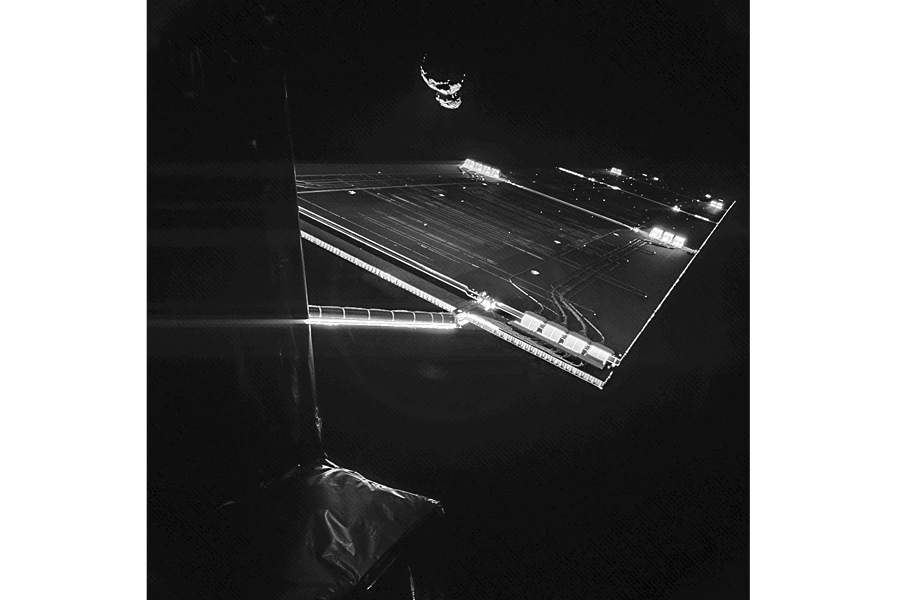European spacecraft snaps selfie with comet in background
Loading...
Spacecraft “selfies” are always a treat and this one is doubly awesome: taken by the Philae lander piggybacked onto ESA’s Rosetta, it shows one of the spacecraft’s 14-meter-long (46-foot) solar arrays glinting with reflected sunlight while off in the distance is the double-lobed nucleus of Comet 67P/Churyumov-Gerasimenko!
Rosetta has been circling the comet for over a month now and returning some truly amazing images, but leave it to little Philae to put it all into perspective. Such a show-stealer! (Not that we mind, of course.)
The image above was acquired with Philae’s CIVA (Comet nucleus Infrared and Visible Analyzer) instrument on Sept. 7, 2014, from a distance of 50 km (31 miles) from Comet 67P/C-G. It’s actually a composite of two separate images made with different exposures adjusted for the lighting disparities between the spacecraft and comet.
The Philae (say “FEE-lay”) lander itself weighs 100 kg (220 lbs) and is about a meter wide and 80 cm high (3.2 x 2.6 feet). The CIVA instrument, one of ten installed on the lander, is composed of seven miniature cameras that will take panoramic pictures of 67P’s surface and reconstruct its structure in 3D, as well as a microscope and a near-infrared imager to study its composition, texture, and reflectivity. (Source)
This is the second image from Philae this year to feature part of the Rosetta spacecraft (but the first to show the comet); the previous one was taken in April 2014.
Back in 2007 Philae took a shot that showed Rosetta’s solar panel and Mars; check that one out here.
Currently Rosetta is being transitioned to its Global Mapping Phase (GMP). This is an incredibly intensive process that will determine how close the spacecraft will be able to get to the surface of the comet as engineers search for the best landing area to which to deploy Philae in November.
Learn more about the Rosetta mission and Comet 67P/C-G here.
Source: ESA
This article was originally posted on Universe Today.
Want to stay on top of all the space news? Follow @universetoday on Twitter.
Jason Major is a graphic designer in Rhode Island. Jason writes about space exploration on his blog Lights In The Dark, Discovery News, and Universe Today.





